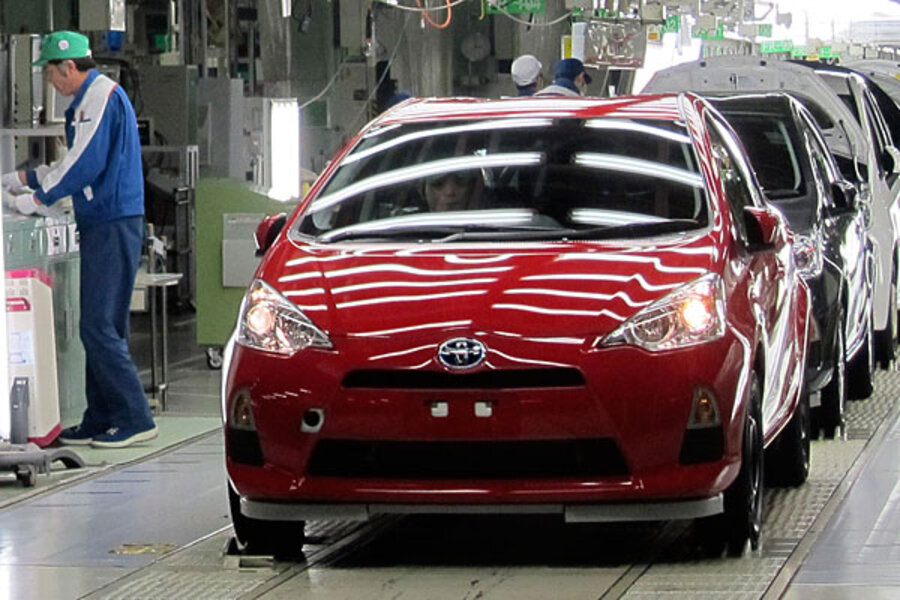Japan tsunami brought home hard lessons for automakers
Loading...
| Chicago
If the US automotive industry has one takeaway from the tsunami in Japan last March, it’s this: be prepared.
The disaster, and subsequent flooding in Thailand, dramatically affected the vehicle and supply chain in Asia – and not just for Japanese automakers. General Motors, Ford, and Chrysler also rely, although to a lesser extent, on certain supply components from Japan. The tsunami forced all three companies to establish contingency plans for where to get materials such as paint dye or computer chips for navigation systems if disaster strikes again.
“What [the tsunami] did was show the vulnerability in the supply chain. It became clear automakers had no idea how far down the supply chain some of these third level suppliers were. They now have a process in place to set up a war room to handle these situations,” says Michele Krebs, a senior analyst with Edmunds.com.
Of course, the hardest hit were Japanese automakers, all of which suspended vehicle production for several weeks. Even though most auto assembly plants in Japan operate south of Tokyo – an area not affected by the tsunami – the majority of its assembly suppliers are located north of Tokyo, directly in the eye of the disaster.
The Japanese automakers first felt a sales hit last summer, when their collective US market share fell. By June 2011, the Detroit Three controlled 50 percent of the US market, according to Edmunds.com, about 4 percentage points more than it did one month before the tsunami.
Auto buyers who may have been considering fuel-efficient bestsellers like the Honda Fit or Toyota Prius were faced with having to wait several months before getting the car. The delay may have forced them to reconsider and purchase domestic equivalents like the Ford Focus, Ford Fusion, or Chevrolet Cruze.
But now, a year after the disaster, there is a different story. Aggressive sales and incentives helped Japan regain its lost market share to just under pre-tsunami levels in February.
Natural disaster is not the only reason why market share for Japanese automakers slipped last year, according to Michael Robinet, manager director of IHS Automotive Consulting in Northville, Mich.
- Frequent safety recalls by Toyota and Honda a year before the tsunami tarnished the reputation of both companies.
- All three US domestic automakers which worked aggressively to retool the market with vehicles consumers wanted: smaller, more fuel efficient, and affordable, but also stylish and technologically smart.
- US companies also got savvier about marketing cars to younger buyers, using social media and generally putting a new face on an industry that had, for a long time, needed reinvention.
The transition helped GM and Ford post record earnings in 2011. Even though Chrysler was third in sales, it may be the biggest success story, having posted its first full-year profit since 1995.
“Even before the earthquake, [Japanese automakers] were already experiencing some competitive issues,” Mr. Robinet says. “They will have to fight hard to continue to regain their market share more than buying it with low prices. They’ll have to regain it with strong product and continuing to focus on the consumer.”
Another challenge for Japanese automakers is the high exchange rate, which is making any product exported to the US less competitive. Robinet says it is likely that more Japanese cars, particularly luxury brands like Lexus, Acura, and Infinity, will start getting produced in North America as a result.
“You have greater flexibility moving closer to your customer. If you can build a high volume of luxury product closer to the customer, there are many less variables for the vehicle manufacturers to worry about,” he says. “One thing Japan is reticent about is risk. They want to mitigate and control and understand currency risk and inventory risk as much as they can.”







